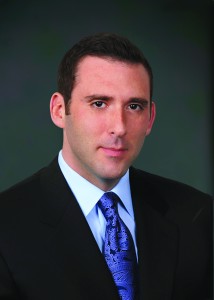Colorado residents and businesses face devastating water inundation that many are dubbing a one-in-500-years weather event. Early reports confirm nearly 2,400 square miles saturated with water causing massive dislocation and loss of life.
As recovery efforts begin, some environmental groups are turning their attention to the Wattenberg field north of Denver that is home to more than 20,000 oil and natural gas wells in Weld County and parts of Boulder, Adams, Larimer and Broomfield counties—counties that have experienced flooding, washed out roads, and evacuations. Several large oil and gas companies currently operate hydraulically fractured wells in the area.
For those businesses that may face potential liability from environmental contamination claims, liability insurance may be an important asset to help manage defense costs and remediation payments—even if contamination claims prove to be wholly without merit.
According to a Sept. 14 Denver Post article, Colorado flooding: Evacuations, broken oil pipeline in Weld County: “Oil drums, tanks and other industrial debris mixed into the swollen river flowing northeast. County officials did not give locations of where the pipeline broke and where other pipelines were compromised. . . .One pipeline has broken and is leaking . . . other industry pipelines are sagging as saturated sediment erodes around the expanding river.”

Energy industry companies with operations in the area are working diligently to shut down wells and pipelines to prevent contamination. Many such efforts are conducted remotely at this time because the wellsites and pipelines remain in flooded and unsafe areas. Despite efforts to eliminate potential environmental risks, some are concerned that even when a company shuts off the drilling or shuts down a pipeline, flood waters may still dislodge tanks from their moorings or wash frack pit waste downstream.
Companies facing potential responsibility for alleged environmental damages may seek to invoke an act-of-God defense with respect to liabilities asserted against them. Congress defines an act of God as “an unanticipated grave natural disaster or other natural phenomenon of an exceptional, inevitable, and irresistible character, the effects of which could not have been prevented or avoided by the exercise of due care or foresight.” See 33 U.S.C. § 2701(1) (Oil Pollution Act); 42 U.S.C. § 9601(1) (CERCLA) (The OPA and CERCLA definitions of “act of God” are identical). Courts have strictly interpreted this defense to create an uphill battle for companies seeking to invoke its protection.
In United States v. Alcan Aluminum Corp., 892 F. Supp. 648, 651 & n.1, 658 (M.D. Pa. 1995), aff’d, 96 F. 3d 1434 (3d Cir. 1996), the defendant sought to invoke the act of God defense after it discharged approximately 100,000 gallons of waste into the Susquehanna River during Hurricane Gloria. The court found that “heavy rainfall is ‘not the kind of “exceptional” natural phenomenon to which the act of God exception applies.'” Id. at 658 (citation omitted); see also Sabine Towing & Transp. Co. v. United States, 666 F.2d 561, 565 (Ct. Cl. 1981) (a freshet condition on the Hudson River was not an act of God); United States v. Stringfellow, 661 F. Supp. 1053, 1061 (C.D. Cal. 1987) (severe rains at a toxic waste disposal site were not an act of God).
Given the unique characteristics of the recent water event in Colorado, companies may be able to successfully advance the act-of-God or other defenses to their alleged liabilities.
Notwithstanding, companies may incur significant defense costs disputing liability and may ultimately pay some amount of money toward remediation to resolve potential liabilities. Businesses may have purchased a stand-alone environmental impairment or pollution liability insurance policy to respond to these potential liabilities. Others may turn to their comprehensive general liability policies for coverage. CGL policies sold to businesses involved in the energy industry may contain avenues for seeking coverage.
For example, an Energy Pollution Liability Extension Endorsement Form LD-20562 (06/06) states that the pollution exclusion does not apply to “bodily injury,” “property damage,” or “remediation costs” caused by a “pollution incident,” meaning a discharge of “pollutants” into the “environment,” provided that:
1. the discharge is both unexpected or unintended from the standpoint of the “insured”; and
2. the discharge commenced abruptly and instantaneously and can be clearly identified as having commenced entirely at a specific time on a specific date during the policy period; and
3. the discharge commenced, at or from a site, location or premises:
a. owned by or occupied by, or rented or loaned to, any “insured” at the time the discharge commenced; or
b. at which any “insured”, or any contractor(s) or subcontractor(s) working directly or indirectly on any “insured’s” behalf, was performing operations at the time the discharge commenced; and
4. the discharge was known by any “insured” within 30 days of the commencement of the discharge of “pollutants”; and
5. the discharge was reported to us within 60 days of the commencement of the discharge of “pollutants.”
This endorsement incorporates insurance coverage concepts that insureds and insurers have litigated for decades, including the fight over what is unexpected or unintended and abrupt or instantaneous. Insureds should immediately report any circumstances or occurrences for which they may be liable. In light of the short reporting period, insureds should report now even if insureds do not presently know if they will face potential liability.

Another policy provision frequently found in CGL policies sold to businesses in the energy industry is an Underground Resources and Equipment Coverage Endorsement Form G 22 62 10 01 (2000).
This endorsement modifies exclusions that apply to Coverage A for “property damage” and “bodily injury.” The endorsement modifies the policy by stating that the “Damage to Property” exclusion does not apply to any:”property damage” included within the “underground resources and equipment hazard” other than “property damage” to that particular part of any real property on which operations are being performed by you or on your behalf if the “property damage” arises out of those operations.
The endorsement defines “underground resources and equipment hazard,” in pertinent part, as follows:
2. “Underground Resources and Equipment Hazard” includes “property damage” to any of the following:
a. oil, gas, water, or other mineral substances which have not been reduced to physical possession above the surface of the earth or above the surface of any body of water.
This endorsement may provide coverage for losses incurred from property damage to “water or other mineral substances.”
Insureds should be aware that their CGL policies may contain these and other endorsements that may provide coverage for potential liability from environmental contamination claims stemming from the recent Colorado weather events. It may also be the case that companies concerned about pollution will have a stand-alone Pollution Policy within their insurance program. A typical pollution policy may include coverage for pollution legal liability, remediation legal liability, legal defense expense and/or contingent transportation.
Following or in conjunction with an insured’s assessment of coverage, it is critical that an impacted company become acquainted with the magnitude of potential losses as a result of a catastrophic loss. Insureds often create an internal working group that may include finance, accounting, sales/marketing, operations, and the general counsel’s office.
Leading companies frequently rely heavily upon external resources like forensic accountants, engineers, construction specialists, brokers and outside legal counsel. When seeking coverage for prior large-scale property and business losses, in our experience insureds have found increased success in the claims process by following a three phase road map. In the first of three claim resolution phases, the insured should work to quickly determine a low and high estimate of the claim, which enables the insurer to assess the potential scope of monetary loss at issue. The second phase requires significant effort by the insured’s internal and external stakeholders to create a well-documented claim submission including critical financial and property damage costs. In the final Phase, the insured and its representatives work to answer any questions from the insurers that might arise from the claim submission and attempt to resolve any differences that may surface.
It is important to recognize that language can vary significantly from policy to policy and that the requirements imposed by specific policy language may require businesses to act quickly. Accordingly, insureds should perform the following action items:
1. Consider and locate all possible insurance policies that may be implicated by your loss, including all policy declaration pages, policy forms and relevant endorsements. If you cannot find one or more of these documents, then request a copy from your insurance agent or broker.
2. Check your policies to confirm whether written notice of a pollution event is required and within what time frame. Locate the address to which any written notice is to be sent and provide written notice of your loss to your insurance company within the time frame that protects and accounts for the company’s interests most effectively.
3. Review your policy to determine if there are any additional procedural requirements or deadlines. To the extent possible, comply with all requirements and deadlines.
4. Establish the right team for the claim. As discussed above, this team may include both internal and external company representatives.
5. Follow up with your insurance company regarding your claim.
Jared Zola is the northeast regional leader for Dickstein Shapiro’s insurance coverage group and is based in the firm’s New York and Stamford offices. Phone: (212) 277-6684; email: zolaj@dicksteinshapiro.com.Clark Schweers is a principal in the Washington, D.C. office of BDO Consulting. He leads the firm’s insurance claim services practice. Phone: (301) 634-0281; email cschweers@bdo.com.
Was this article valuable?
Here are more articles you may enjoy.


 ’60 Minutes’ Homeowners Ask Court to Force DFS to Divulge Heritage Probe Info
’60 Minutes’ Homeowners Ask Court to Force DFS to Divulge Heritage Probe Info  FBI Involved After Two Florida Injury Lawyers Go Missing From Fishing Trip
FBI Involved After Two Florida Injury Lawyers Go Missing From Fishing Trip  AIG’s Zaffino to Step Down as CEO as Aon’s Andersen Steps In
AIG’s Zaffino to Step Down as CEO as Aon’s Andersen Steps In  MAPFRE Accuses AAA of Violating Long-Time Exclusive Marketing Agreement
MAPFRE Accuses AAA of Violating Long-Time Exclusive Marketing Agreement 

